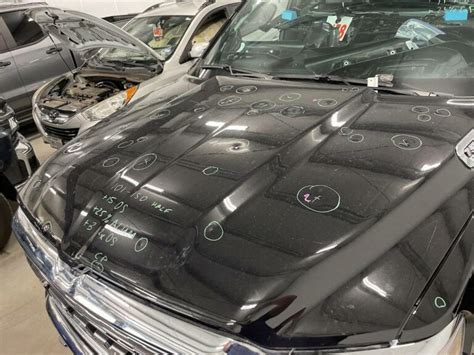Hail Damage Repair: Cost-Saving Tips for Car Owners
Hailstorms can wreak havoc on your vehicle, leaving behind a landscape of dents and dings. Repairing this damage can be expensive, but there are ways to mitigate the cost. This comprehensive guide offers practical tips and strategies to help you save money on hail damage repair while ensuring your car is restored to its pre-hailstorm condition.
How Much Does Hail Damage Repair Cost?
The cost of hail damage repair varies greatly depending on several factors: the extent of the damage (number and size of dents), the type of vehicle (luxury cars often cost more to repair), the chosen repair method (paintless dent repair (PDR) is typically cheaper than traditional body shop repair), and your location (labor costs vary regionally). Minor hail damage might cost a few hundred dollars, while extensive damage could reach thousands. Understanding these variables is the first step towards saving money.
Choosing the Right Repair Method: PDR vs. Traditional Repair
Paintless Dent Repair (PDR): This is generally the most cost-effective option for smaller dents. Skilled technicians use specialized tools to push dents out from the inside of the panel, preserving the original paint. PDR is faster and requires less labor than traditional bodywork, resulting in lower costs. However, PDR isn't suitable for all hail damage; severely damaged or creased panels might require traditional repair.
Traditional Body Shop Repair: This involves sanding, filling, priming, and repainting the damaged areas. It's more invasive and time-consuming than PDR, leading to higher costs. This method is necessary for significant damage where the paint is compromised or the metal is severely deformed.
How to choose between PDR and traditional repair?
The best way to determine the appropriate repair method is to obtain multiple estimates from reputable PDR specialists and body shops. They can assess the damage and recommend the most cost-effective approach. Don't hesitate to ask questions and understand the rationale behind their recommendations.
Saving Money on Hail Damage Repair: Practical Tips
Document the Damage Thoroughly:
Before contacting anyone, take detailed photos and videos of the hail damage. This documentation is crucial for insurance claims and for comparing estimates from different repair shops. Accurate documentation can prevent disputes and ensure you receive the appropriate compensation.
Shop Around and Compare Estimates:
Obtain at least three estimates from different reputable PDR specialists and body shops. Compare the cost, repair methods, and warranties offered. Don't automatically choose the cheapest option; consider the reputation and experience of the repair shop.
Check Your Insurance Coverage:
Most comprehensive car insurance policies cover hail damage. Contact your insurer immediately after the hailstorm to file a claim. Understand your deductible and coverage limits before starting repairs. Be prepared to provide your detailed documentation of the damage.
Consider Your Deductible:
Weigh the cost of repair against your insurance deductible. If the repair cost is less than your deductible, it might be more economical to pay for the repairs out-of-pocket.
Negotiate with Repair Shops:
Don't be afraid to negotiate the price with repair shops, especially if you have multiple estimates showing lower prices. Be polite but firm in your negotiations.
Explore DIY Options (with caution):
For extremely minor dents, some DIY solutions exist, such as using suction cups or specialized dent pullers. However, these methods require skill and can potentially worsen the damage if done incorrectly. Proceed with caution and only attempt DIY repairs if you're confident in your abilities.
What if My Car is Leased?
If your car is leased, check your lease agreement for details on hail damage repair. The leasing company might have specific requirements or restrictions on repairs. Contact them immediately to understand their process and approved repair shops.
Can I Prevent Hail Damage?
While you can't completely prevent hail damage, parking your car in a garage or covered area during a hailstorm is the best preventative measure. If you don't have access to a garage, consider using a hail blanket or other protective covering.
By following these cost-saving tips and choosing the right repair method, you can significantly reduce the financial burden of hail damage repair while ensuring your car is restored to its pre-hailstorm condition. Remember, thorough research and proactive steps are key to minimizing the impact of this unfortunate event.

